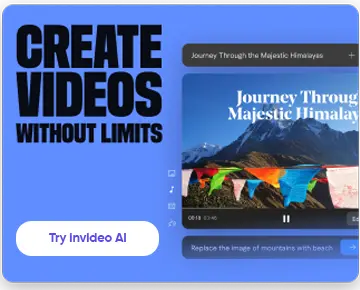If you run a faceless or AI-driven YouTube channel, the July 15 monetization update has probably been on your mind. This announcement has sparked a lot of discussion, where some are even calling it the end of AI content. The truth is, it's not that extreme.
The update does bring changes, but it doesn't mean the end of AI faceless channels. It simply means that you need to re-strategize your content accordingly to stay eligible for monetization. Whether you're using an AI faceless video maker or creating content manually, the focus should be on delivering genuine value to your audience. To help you with that, we've put together this blog, which covers:
-
What is the New YouTube Monetization Policy?
-
3 Proven Strategies to Keep Your Faceless AI Channel Safe (and Growing)
-
Practical Takeaways for Faceless Creators
So, without any further ado, let's dive in!
What is the New YouTube Monetization Policy?
On July 15, 2025, YouTube introduced a new update to the YouTube Partner Program (YPP) that has attracted a lot of attention worldwide. The platform has revised a long-standing policy by renaming “repetitious content” as “inauthentic content.” While the label has changed, the main essence of the rule remains the same. Channels that publish repetitive mass-produced content or content that lacks genuine originality will not qualify for monetization.

In addition, this update also doesn't affect the “reused content” policy either, which covers formats like commentary, clips, compilations, or reaction videos. Those categories are reviewed separately, and there’s a touch of original insights; they are not considered inauthentic. In fact, YouTube does not look at every single video when it reviews a channel for monetization, but several factors, including:
-
Channel’s main theme and overall identity
-
Most viewed and most recent uploads
-
Videos that contribute the largest share of watch time
-
Metadata, including titles, descriptions, and thumbnails
-
Channel's “About Us” section
So, yes. The aim is not to penalize experimentation but to make sure that the channel is actually trying to bring in genuine and viewer-focused content. Learn more about this new update here:
Why is YouTube Doing This?
There are multiple reasons behind this step, but the intent remains the same: to keep the platform useful for everyone – viewers, advertisers, and creators. If the user’s feed were filled with the same low-effort videos, the overall experience would suffer.
People stop finding value in what they watch, advertisers become cautious, and the platform risks losing credibility.
AI has added a new layer to this problem by lowering the barrier to content production so much that anyone can churn out dozens of videos in a matter of hours. That’s powerful, but unfortunately, it has also fueled a surge of videos that look fine on the surface but offer no real value. This phenomenon is often called “AI slop.”
So, yes. By making monetization rules, YouTube is basically drawing a boundary here. The main intent is not to discourage creators from using AI but to simply use it more thoughtfully.
Who’s Not at Risk?
The good part is, not every creator is in danger. The focus is specifically on videos that feel mass-produced, repetitive, or created with little originality.
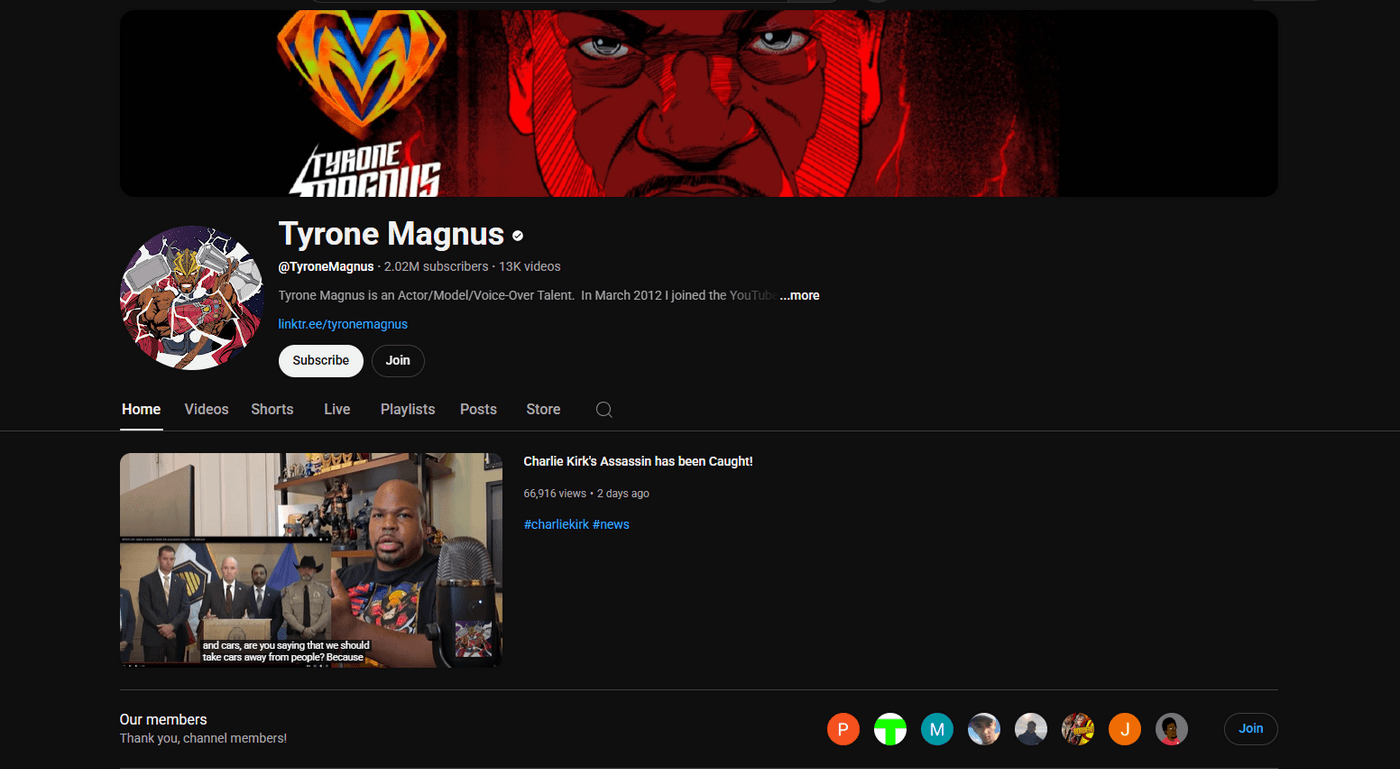
Take reaction channels, for example. Tyrone Magnus has built his channel around his entertaining and genuine responses to trailers, shows, and trending content. The clips he includes in videos aren’t the core, but his expressions, timing, and commentary make the whole experience engaging. That’s why this style of content remains safe.
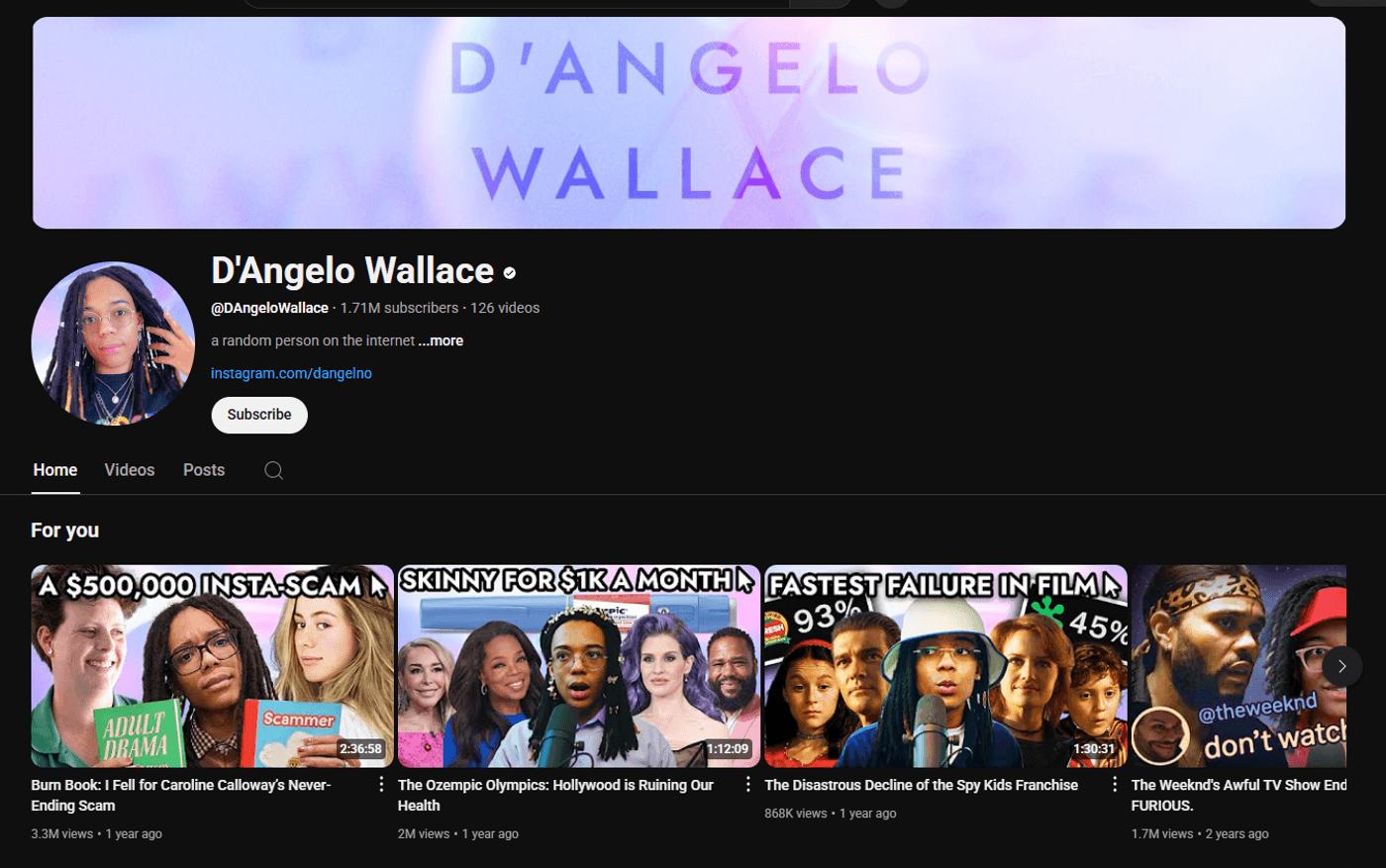
The case remains the same with commentary channels. D’Angelo Wallace, for instance, uses a mix of research, editing, and narrative to share thoughtful commentary in her videos. The borrowed clips in videos support his point of view, but don’t end up replacing it. This kind of approach is very different from low-effort compilations that add little context or analysis.
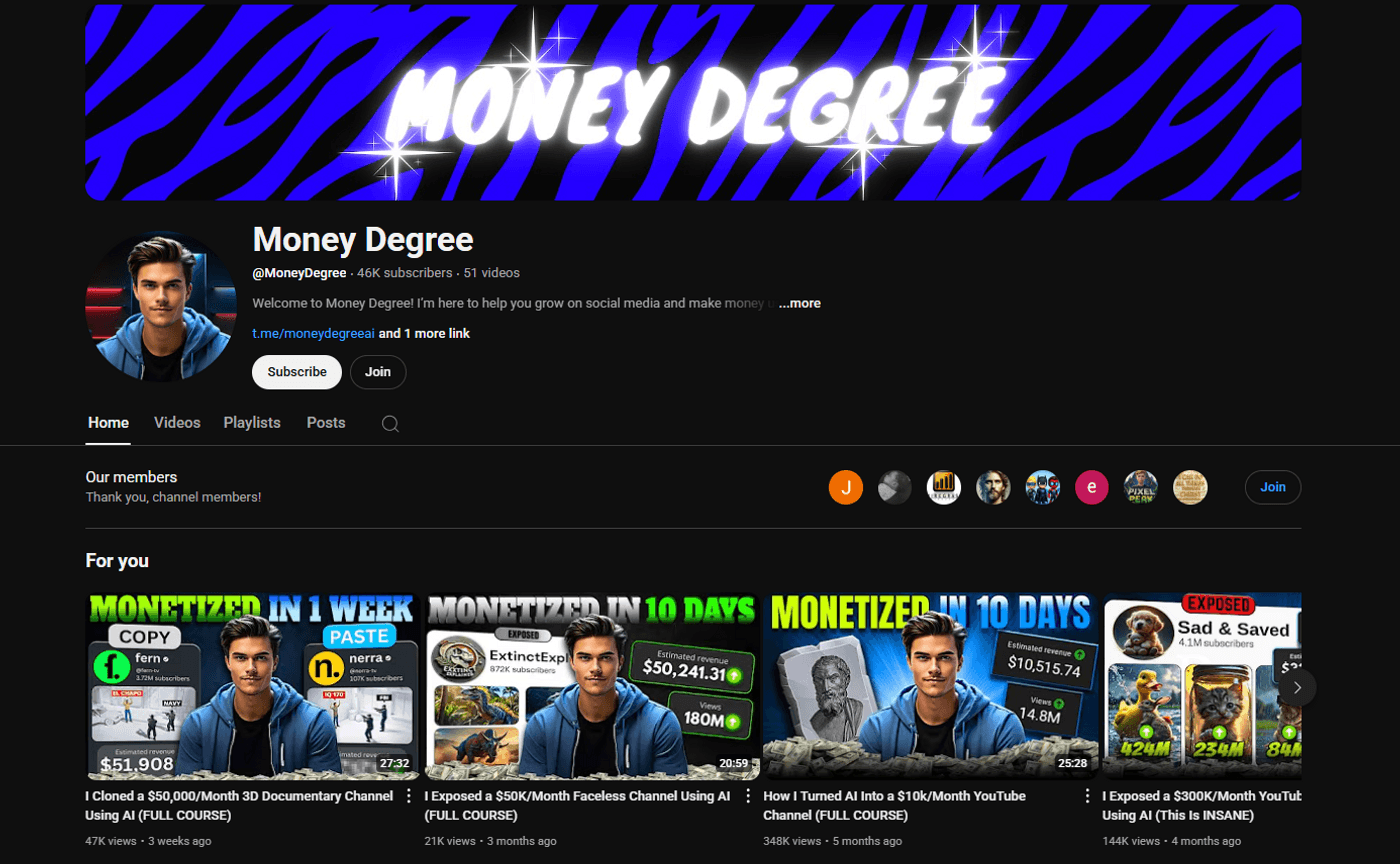
Even faceless AI channels can be a safe bet, as long as they’re built around delivering real value. Money Degree YouTube channel is a pretty good example, as it doesn’t show a real person but an AI avatar narrating the content. That’s a whole different approach than generic AI voiceovers and stock visuals with no thought, rawness, or soul behind them.
Who is Actually at Risk?
These are the channels that heavily focus on quantity rather than quality. With the increased adoption of AI, producing videos has become easier, but quality usually gets compromised in the process. Most of these formats mainly fall under one of these categories:
1. Reddit Narration Channels
At first glance, narrating Reddit stories may seem fair because it’s merely storytelling. Pretty normal. But the problem is that many of these channels simply pick posts, add stock visuals, and run them through AI. Mostly, this happens without adding any originality or genuine effort in the process.
When multiple channels upload the same “Reddit AITA story” with no creative angle, the content would quickly feel recycled and, in fact, downright duplication.
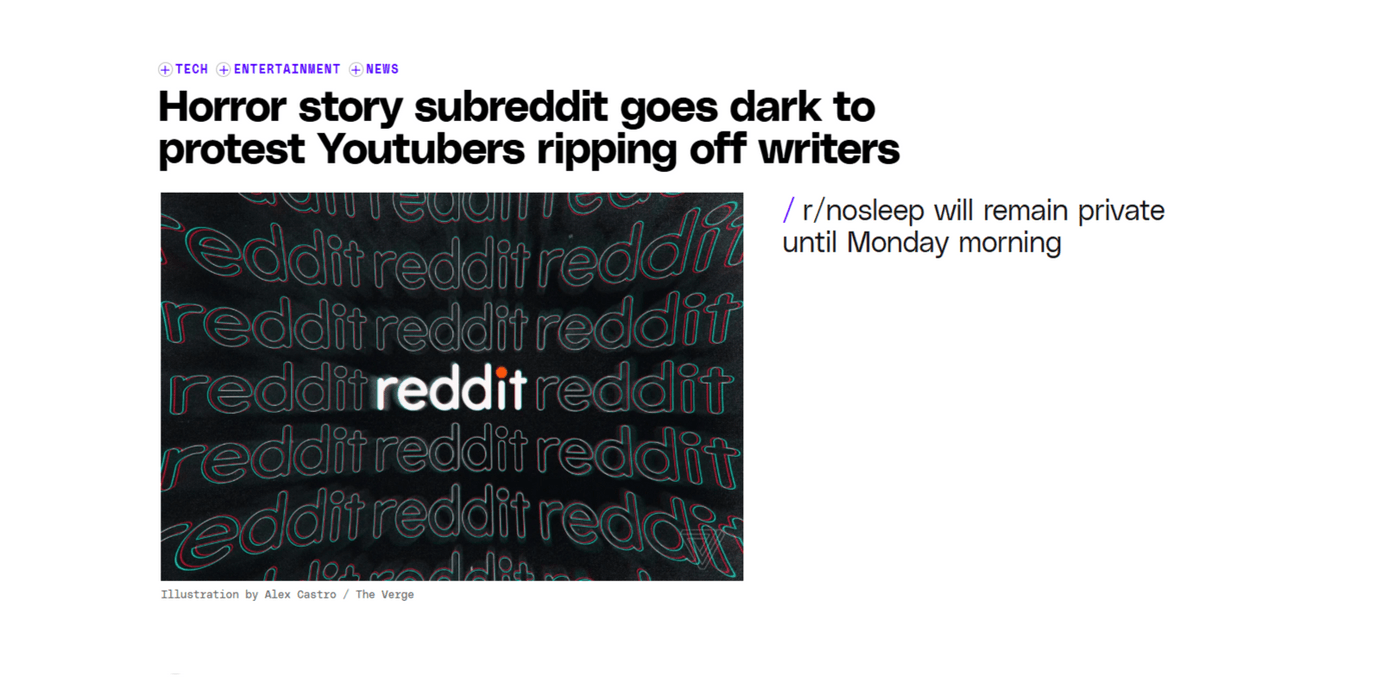
This issue actually became controversial back in 2020 when r/NoSleep, a popular horror-writing community on Reddit, went private for a while to protest against YouTubers taking their stories without credit. Writers were frustrated that their original work was being lifted word-for-word, monetized by others, and even presented as “content.”
This backlash relates back to exactly why platforms like YouTube are now considering this style of video inauthentic. The reason is simple – it doesn’t really reward the real creators, and undermines trust with audiences.
Simply adding an AI voice and background music cannot change the fact that the material is someone else’s work repackaged at scale. With the new rules, YouTube is focusing more on rewarding originality, which is why such formats are at the highest risk.
2. Script/Thumbnail/Title Recycling Farms
Several channels follow a similar pattern by recycling the same script structure, titles, and thumbnails with AI across dozens of uploads. Since it’s so low-effort, such content ends up floating in bulk on YouTube. But to the platform, this comes off as content that’s not created to inform or entertain but to mass-produce solely for ad revenue.
3. Ambient Loops With No Originality
Next are channels that publish endless “rain sounds,” “study music,” or “white noise” videos you might have definitely come across. Surely, relaxation and ambient content can and do have value, but the issue arises when the same 30-second sound/stock clip is looped for hours, especially when uploaded across dozens of videos with that mechanical AI feel.
Does This Mean AI Is Banned?
Absolutely not. AI itself is not the problem here. YouTube has made it clear that creators can continue to use AI as part of their workflow. In fact, it actively promotes the use of AI-powered tools like green screen, auto-dubbing, and even direct integrations with Google’s Gemini.
“Think about it – If AI were the issue, would YouTube be building these features into Studio?”
No, right? The real concern here is how AI gets used. When it’s used in a spammy way with no originality or effort, that’s when the content becomes “inauthentic.” If you’re simply feeding scripts into a text-to-speech tool, pairing it with stock visuals, and publishing dozens of near-identical videos, demonetization risk would definitely bother.
However, if you’re using AI to speed up editing, improve visuals, clone your own voice for consistency, or even generate creative assets that you then shape with your own storytelling, you’re in the safe zone.
3 Proven Strategies to Keep Your Faceless AI Channel Safe (and Growing)
Keeping the new update in mind, the channels that thrive now will be the ones that purely focus on originality. So, if you’re running a faceless AI channel, here are 3 strategies that can help you not only stay safe but also grow stronger in the long run!
1. Build a Recognizable Identity (Avatar & Tone)
The first thing reviewers and viewers look for is whether your channel feels intentional or generic. Since you don't appear on camera, your identity needs to come through either as your avatar, branding, or the overall look and tone of your videos. When these elements are consistent, they create a distinct identity for your presence on YouTube.
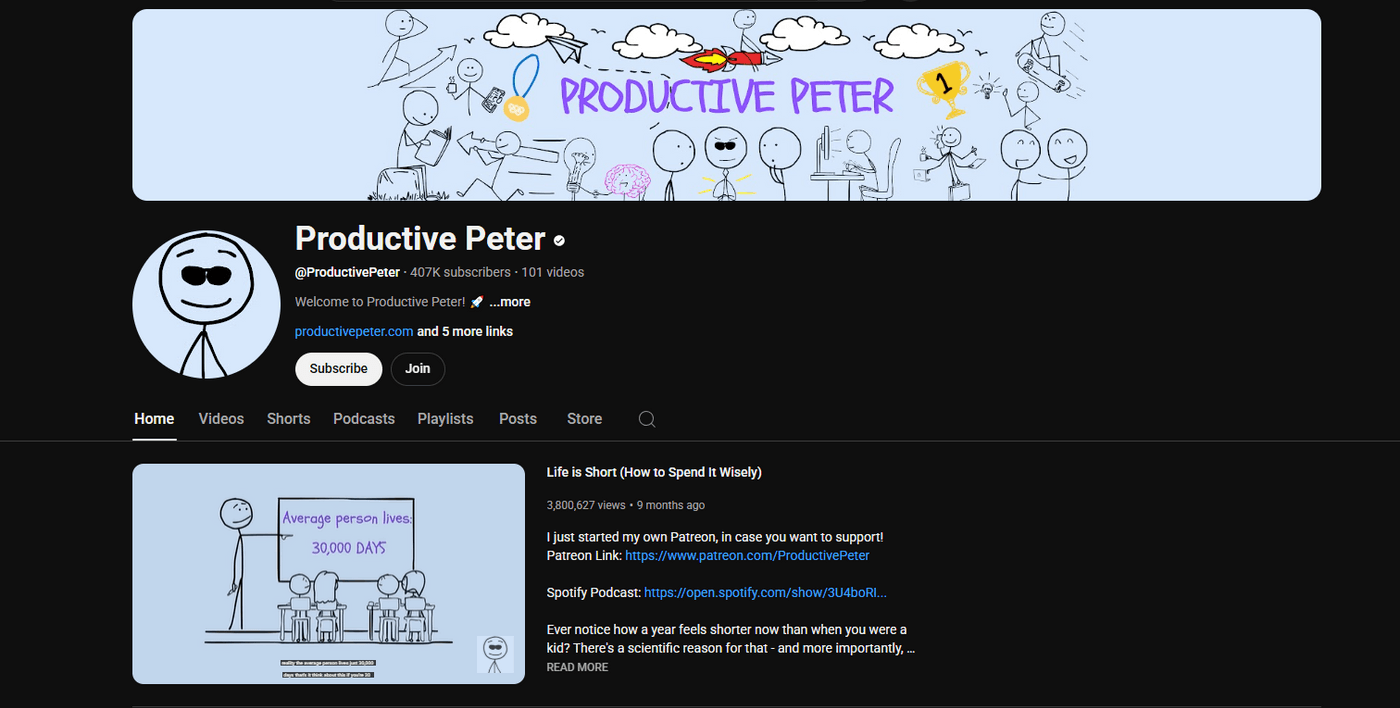
A pretty good example of this category is the channel “Productive Peter.” It falls under the faceless category, where you won't see a real person or even an avatar, but a simple cartoon presenting the content in a fun and engaging way. It feels familiar across multiple uploads while the thumbnail follows a clear copy style, and the tone of delivery stays the same in every piece.
2. Use Unique, Humanized Voiceovers
If you’re using the same free robotic voices as everyone else, your content would easily blend in with the thousands of other videos using those same tools. That’s exactly the kind of thing YouTube is trying to reduce. So, what’s the solution? It’s simple, go for voices that feel natural and distinct.
For instance, you can use premium AI voices on invideo AI for variety, along with an option to clone your own voice. This makes it easy to produce genuine human content at scale. Because ultimately, when somebody hears it, they would immediately know it’s from your channel.
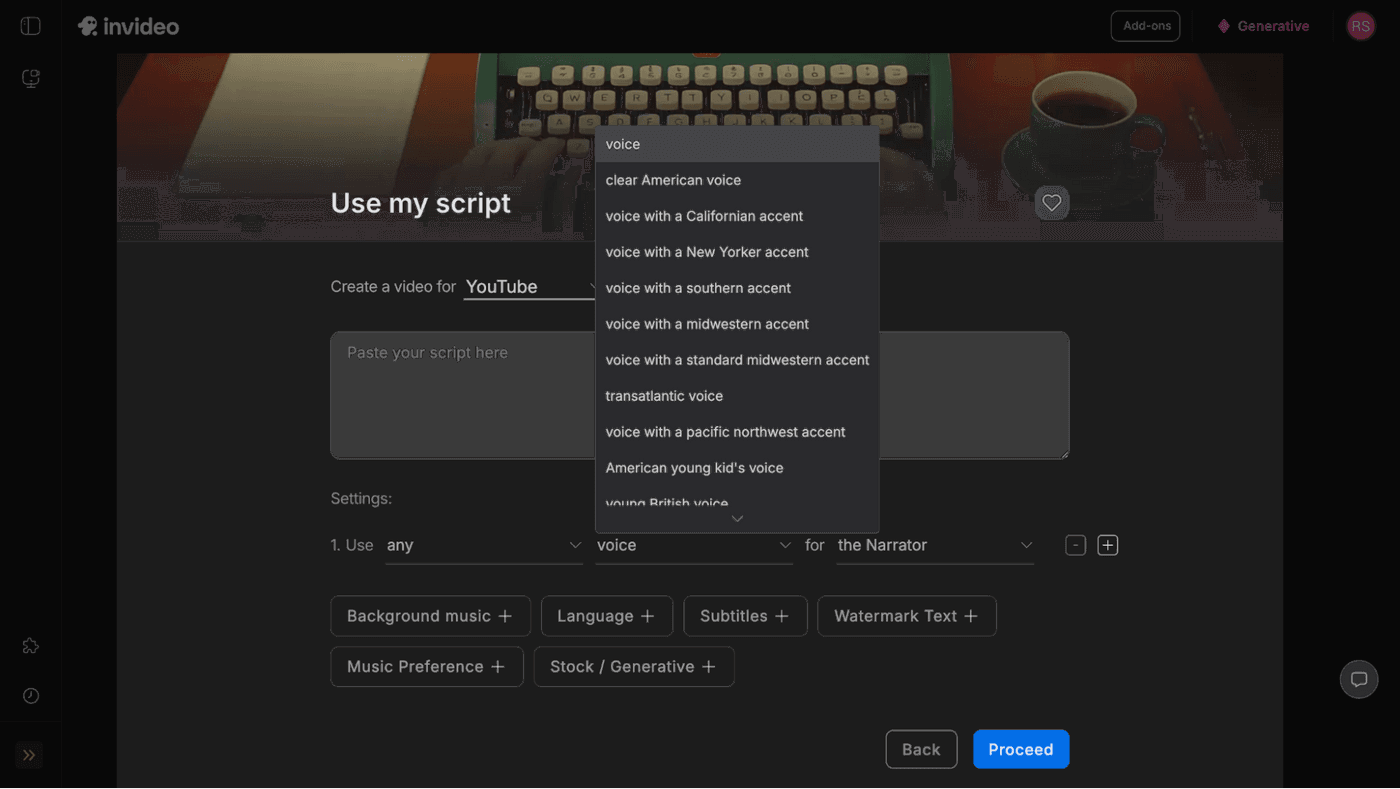
But be careful while experimenting and avoid using celebrity-like voices. This can potentially lead to impersonation, which can trigger policy violations and hurt your channel.
3. Deliver Real Transformation & Value
If someone finishes a video and feels they didn’t learn or gain anything, that content will be seen as low value. The safest way forward is to focus on transformation by leaving your viewers with a new insight, a fresh perspective, or even just a meaningful takeaway.
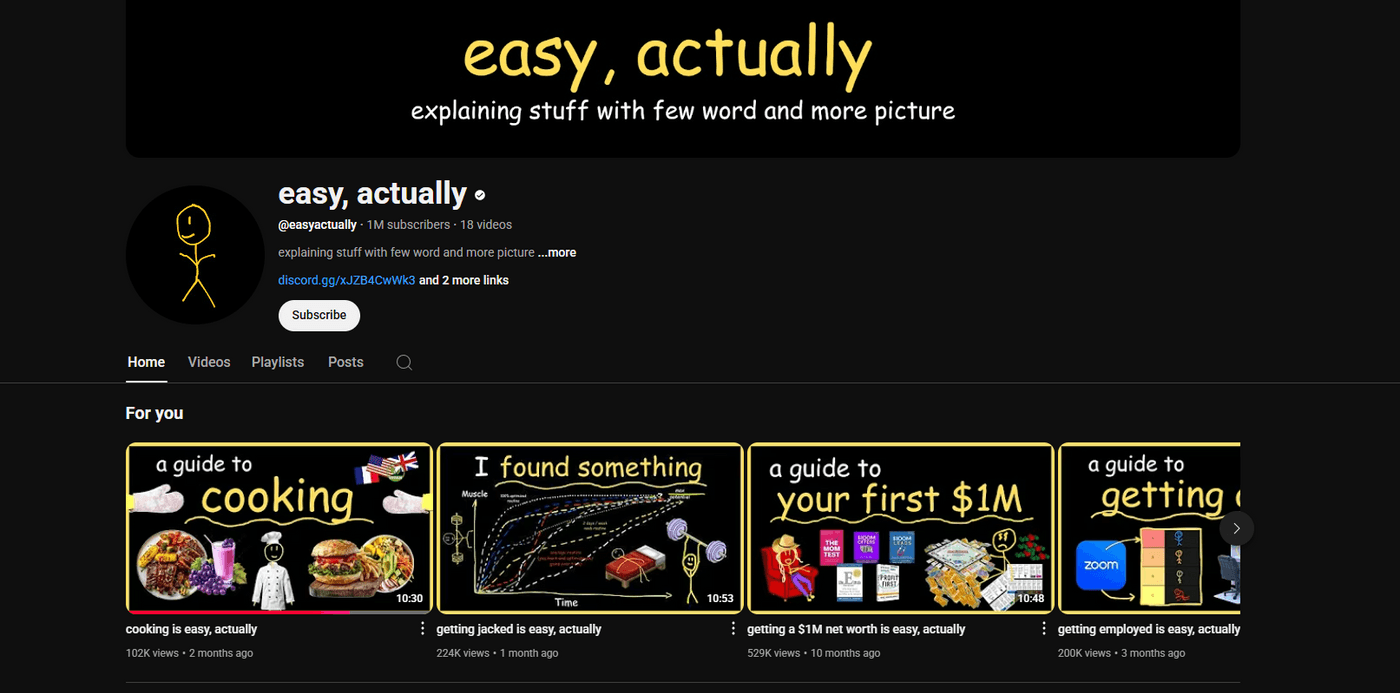
That’s why channels like “easy, actually” are still working so well. It explains the context, connects the dots, and tells a bigger story. As a viewer, you get a deeper understanding, and that’s what makes the content stick around for a long time. For faceless AI creators, that’s a precious takeaway and a good example of how to do this format right.
Practical Takeaways for Faceless Creators
It’s pretty predictable: YouTube isn’t against AI itself. It’s against content that feels repetitive, generic, or empty. To make sure you stay safe and keep growing, make sure to focus on these aspects:
1. Focus on Original Scripts and Storytelling
Even if you’re using AI to get ideas, your final script should always carry YOUR perspective. Viewers and YouTube reviewers can easily tell when a video feels like a recycled template. The vibe itself says it all. But a fresh storyline or a unique way of explaining things gives your channel the originality it needs to stay safe.
2. Add Personal Insights, Even in Automation!
If you’re narrating a case study, breaking down news, or sharing tips, do add a touch of your own opinion either in the script or somewhere in the final execution. That’s what separates your video from 100s of similar ones and shows that there’s a real person behind it, not AI.
3. Treat AI as an Assistant, Not YOUR Replacement
AI is great at cutting workload, but it can’t replace your vision. So, use it to shape or even enhance your research, outlines, or polishing visuals, but let the creative direction come from you. This balance ensures your videos feel authentic while still saving you a lot of time.
Final Thoughts: Is This the Death of Faceless AI Channels?
Well, not really. This isn’t the end of faceless AI channels but a sincere effort to make the experience feel meaningful for everyone involved. As low-effort uploads hardly leave any impact, channels that build trust and consistency will stand out even more. AI is still very much part of this reality, where tools like invideo AI can help you simplify the heavy lifting.
Simply give a prompt, and you get everything from script, visuals, and subtitles ready with custom editing options. All of this eventually makes it easy to focus on the originality only YOU can bring to the table. As a creator, if you embrace this shift with adaptability, you will not just stay safe, but also build a solid foundation for your channel in the long term!


